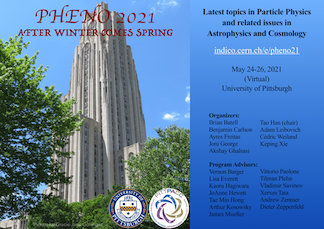Conveners
DM IV
- Kaustubh Agashe (University of Maryland)
This talk will discuss scenarios where dark matter abundance undergoes a "bounce" - a brief period of increase before thermal freezeout, following the standard exponential Boltzmann suppression - and its related phenomenological aspects.
We consider how a modified cosmological history with a period of electroweak confinement could allow a WIMP dark matter candidate to escape current exclusion bounds. We consider an $SU(2)_L$ vector doublet fermionic dark matter candidate which confines with standard model fermions during this era. These composite particles interact, depleting the dark matter abundance. After these processes...
We present two distinct models which rely on 1st order phase transitions in a dark sector. The first is a minimal model for baryogenesis which employs a new dark SU(2) gauge group with two doublet Higgs bosons, two lepton doublets, and two singlets. The singlets act as a neutrino portal that transfers the generated baryon asymmetry to the Standard Model. The model predicts extra relativistic...
Non-trivial dynamics within the dark sector can give rise to a complicated, non-thermal dark-matter phase-space distribution, which in turn can have a significant impact on the growth of the cosmic structure. In this talk, we explore the cosmological implications of such non-trivial dark-sector dynamics. We show how the non-trivial features in the phase-space distribution can lead to...
The distribution of primordial dark-matter velocities can significantly influence the growth of cosmological structure. In principle, one can therefore exploit the halo-mass distribution in order to learn about the dark sector. In practice, however, this task is both theoretically and computationally intractable. In this talk, we present a simple one-line conjecture which can be used to...
We study the phenomenon of gravitational particle production as applied to a scalar spectator field in the context of α-attractor inflation. Assuming that the scalar has a minimal coupling to gravity, we calculate the abundance of gravitationally-produced particles as a function of the spectator's mass $m_χ$ and the inflaton's α parameter. If the spectator is stable and sufficiently weakly...
I will discuss the Higgs-portal dark matter scenario in the 5-dimensional brane world cosmology, such as Randall-Sundrum cosmology and Gauss-Bonnet cosmology.
